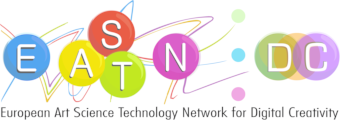Linked Open Data (LOD) initiatives are entering a maturity phase in major cultural digital portals. One such player is Europeana, EU’s digitised museum collections, which aims to move the digital transformation of cultural heritage a step forward. A significant amount of collections of art and culture objects have already included in its database and sophisticated application programming interfaces (API) have been exposed. This open culture of data sharing enables exploration of information, research and integration with external applications. This article defines some key terms and concepts in order to design a reusable, reproducible and resilient interface and process to extract information in a friendly manner to non-programmers, who however follow a scripting process in their data analysis workflow. The actual goal of this research is to provide and discuss tools that simplify the creation of interesting datasets using the facilities provided by the Europeana initiative.
We will analyze strategies and processes for data import, tidying, manipulation, visualization, and programming that is the backbone of any analysis of digitalized objects of cultural heritage, existing in Europeana’s LOD, and/or integration with other data-driven application. Instead of discussing tools for statistical modelling or actual applications, we will focus on interfacing with the information stored in Europeana and providing methods and tools for easy access to this information, and how these tools can become credible for reusage by the research community. Since this is a lot of ground to cover in a brief paper so we will focus on simplifying and lowering the entry-level of connecting and harvesting data from Europeana and tidying. We will describe a package of methods to harvest such information in a compatible way with modern data analysis techniques in order to ease the conversation between human and computer about extracting information from LOD of cultural heritage.
Back
“Reflections: Bridges between Technology and Culture, Physical and Virtual”
is supported by:






